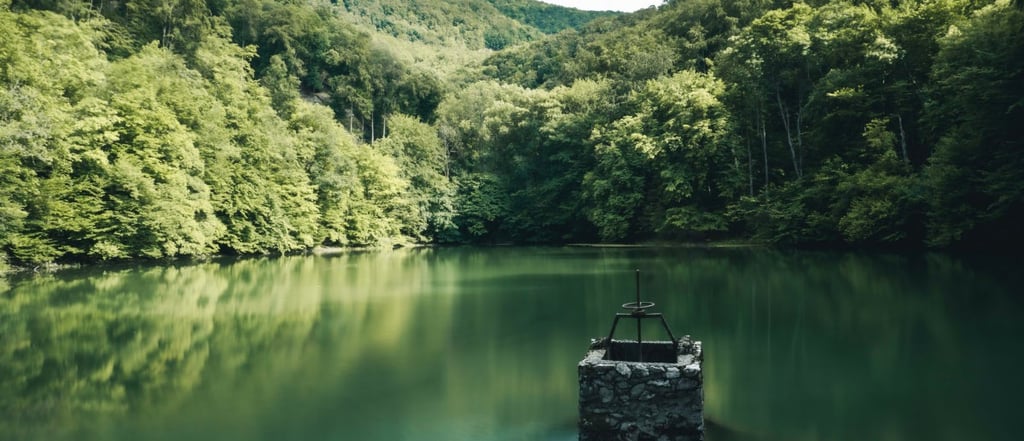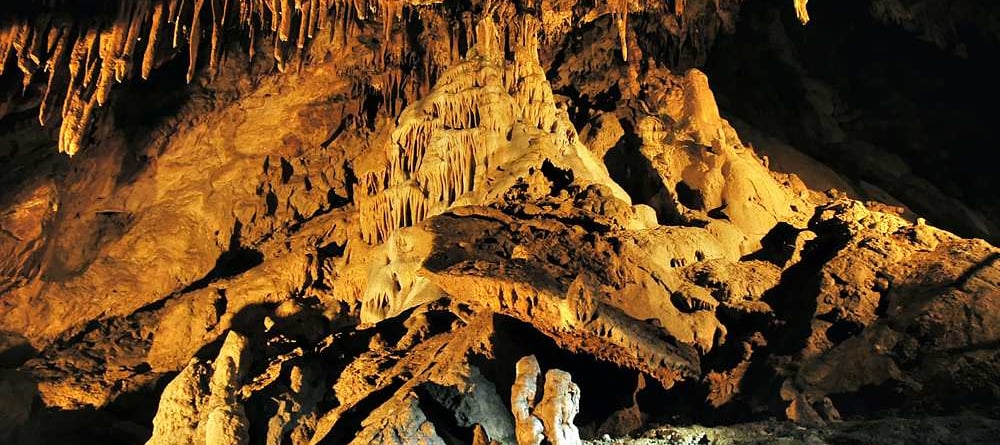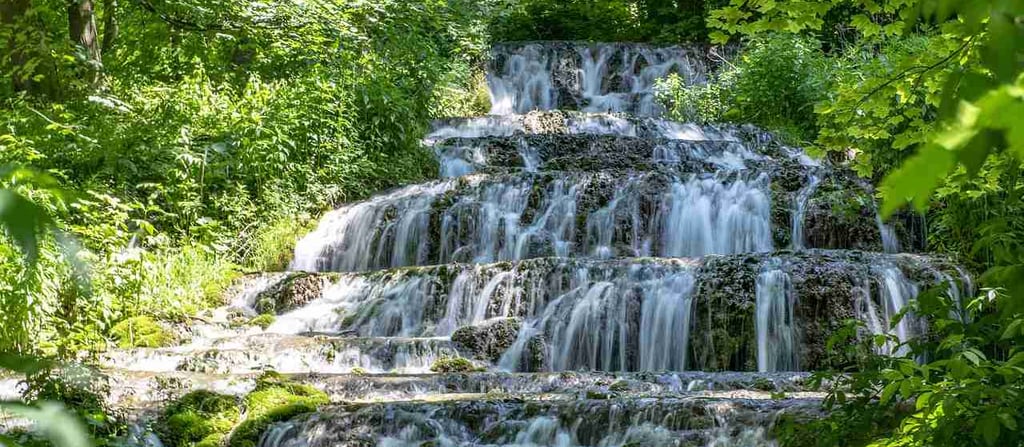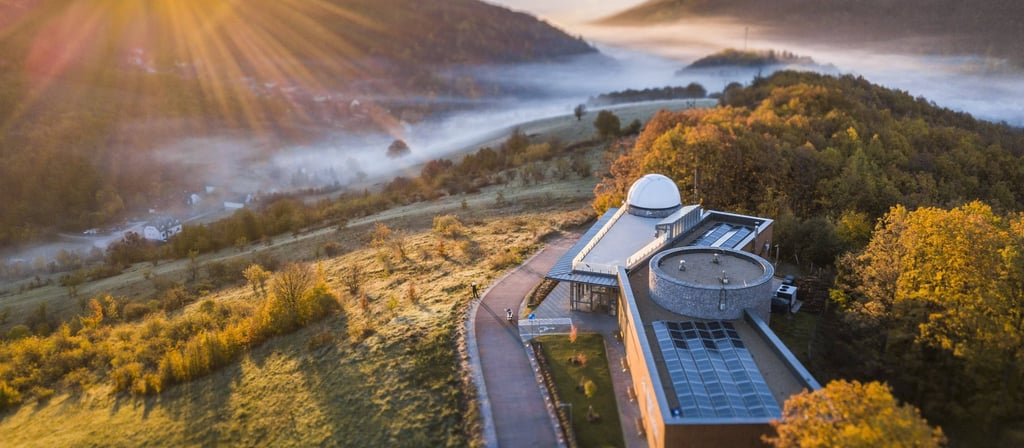Bükk National Park
A majestic woodland and limestone wonderland where Hungary’s highest peaks, ancient caves, and wild valleys meet in misty, mountainous beauty.


The Crown of Hungary’s Highlands and Geological Legacy
Bükk National Park, situated in the heart of Hungary’s Northern Mountains between Eger and Miskolc, represents the country’s largest mountainous protected area. Founded in 1977 as Hungary’s third national park, and covering over 43,000 hectares—with nearly 3,700 hectares under strict protection—it belongs among Hungary's most ecologically significant landscapes. Lower slopes rise to forested peaks reaching nearly 960 meters at Istállós‑kő, while the plateau itself conceals more than a thousand limestone caves, sinkholes, and dramatic ravines carved over millennia from karstic layers. These geological formations include Hungary’s longest cave (Istvánlápa, around 4 km) and sample ancient Paleolithic habitations, offering both scientific intrigue and sensory enchantment. The park’s beech forests—after which it is named (Bükk means beech)—stand as remnants of glacial forests, giving way to subterranean springs, moss-shrouded rock formations, and limestone valleys. Beneath shifting canopy light, the air vibrates with life, as seasonal mists rise through valleys, streams echo from ravines, and cave portals beckon discovery. In its scale, geological diversity, and preserved wildness, the park is less a national preserve than a highland realm where natural history unfolds in relief and shadow.
Ancient Caves, Karst Systems, and Archaeological Depth
The Bükk Mountains are riddled with more than 1,100 registered caves, making it the densest karst system in Hungary. Many of these caves—including Istállós‑kő—have welcomed human visitors for tens of thousands of years. The Istállós‑kő cave holds some of Europe's richest Ice Age fossil deposits, with fauna from 30,000–40,000 years ago, including cave bear bones and early tool remnants. Open to hiking visitors, the site combines archaeological gravitas with scenic plateau views. Other notable formations include the Szent István Cave, discovered when a dog fell into it, revealing impressive stalactite chambers, and the Anna Cave, which is unique worldwide due to its formation from dissolved limestone rather than typical dripping deposits. Visitors explore via guided subterranean tours, descending into cooler worlds where humidity clings to walls, mineral formations glow under soft lighting, and silence speaks of time beyond human scale. Aboveground, sinkhole dolinas in Bükk Plateau form natural amphitheaters, rock tors such as Tar‑kő and Pes‑kő offer panoramic vantage, and cliff plunges channel storms into echoing channels. Together, geology and human heritage converge: caves acted as refuges and laboratories, karst systems shape biodiversity, and human presence is traced in fossil and ceramic fragments alike.
Cultural Crossroads: Mountain Towns, Spas, and Gastronomy
Bükk National Park weaves nature with cultural legacies. Towns like Lillafüred and Szilvásvárad nestle at highland edges and host charming village life, spas, and craft tradition. Lillafüred’s Neo‑Renaissance Palace Hotel overlooks Hámori Lake and offers lakeside dining, while wooden adventure parks and rope gardens line the Szinva stream. Szilvásvárad features the Fallow Deer Reserve, live forestry museums, and equestrian traditions. Smaller settlements around villages such as Bélapátfalva, Makkoshotyka, or Szomolya retain baroque churches, wine cellars, and traditional ceramics. Local gastronomy highlights game stews, forest mushroom soup, apple pálinka, forest honey and seasonal berries. Regional markets offer smoked trout, goat cheese, and forest herb teas. Cultural festivals enliven forests after dusk: stargazing in the park's astronomy dome, medieval crafts fairs, traditional shepherd song nights, ecological education camps like "Bikk Betyár" for youths. Even village hostels and lodges integrate eco‑design, offering overnight stays in cabins built with local oak or stone. Rain or shine, nature and culture converge: spa afternoon, gallery evening, forest dawn, museum midday, all under the same karst canopy.
Conservation, Research, and Environmental Stewardship
Bükk National Park's management embodies advanced conservation ethics. Its executive base in Eger oversees 18 strictly protected reserves totaling roughly 3,800 ha. Citizen science programs monitor wolf and brown bear presence, rare orchids, cave temperatures, and hydrology. Interactions with Slovakian neighboring reserves reinforce cross-border habitat corridors. The park balances accessibility with preservation: cave access is controlled, hiking routes avoid erosion-prone slopes, and environment education centers—such as at Szeleta Park Visitor Centre—offer interactive geological exhibits. Research into climate impact guides tree-line changes, drought frequencies, and migration shifts in bird species. Water retention and karst water systems are studied to safeguard regional caves and springs. Local communities contribute by monitoring poachers, maintaining trails, and practicing forestry standards. Residents benefit from park-branded products—wild honey, guideline tours, sustainable wood crafts. The result is a living model: active stewardship, scientific transparency, cultural collaboration, conservation incentive, and ecological resilience across European temperate mountain landscape.
Practical Information
Bükk National Park is accessible from Eger or Miskolc, both served by direct trains from Budapest. The park is open year-round; visitor centers like those in Lillafüred and Bélapátfalva operate from spring through autumn. No entry fee applies; however, guided cave tours, forest railway rides, and certain trail crossings may require tickets ranging from 1,500–3,000 HUF. Multilingual guided hikes, 4-season horse carriage rides, and astronomy programs are available via reservation. Accommodations range from eco-lodges in Lillafüred to guesthouses in Szilvásvárad and Eger hotels. Trails require sturdy footwear; some caves are pet-unfriendly. Public transport from Miskolc includes bus lines to Lillafüred; taxis or rental cars recommended for plateau access. Seasonal weather changes—from spring wildflowers to autumnal color, winter frost to summer humidity—affect planning. Tel: local park authority in Eger handles permits and maps. Facilities offer restrooms, cafés, picnic areas, and guided programs. Safety tips include staying on marked trails, preserving silence near caves, and rehydrating.
Official Links
To explore detailed trail maps, event schedules, researcher resources, and visitor services, visit the official site of the park authority:
https://bnpi.hu/
Follow park stories, wildlife updates, and educational programs on social media:
Instagram: @bukkinemzetipark
Facebook: Bükki Nemzeti Park Igazgatóság (Bükk National Park Directorate)


Forests, Fauna, and Seasonal Diversity
Forests dominate Bükk: over half of the park is densely wooded, primarily with beech, oak, and pine. These ancient woodlands support a rich mosaic of habitats: streamside moss carpets, undergrowth of wild garlic or wolf’s bane, and canopy hollows for birds such as black storks or peregrine falcons. Mammals such as red deer, wild boar, foxes, and even the occasional wolf inhabit the silent understory. Smaller creatures—martens, forest dormice, salamanders—flit among logs and stones. In spring, the park’s meadows burst with wildflowers: primroses, snowdrops, and carpets of Corydalis under still-bare branches. By summer, shaded streams and waterfalls—like the Szinva Waterfall near Lillafüred—offer cooling sanctuary amid vertical limestone scars. Autumn brings vivid color: gold beech canopy, red mushrooms, blue sylvan shadows. Winter drapes slopes in silent white, and trails like Szalajka Valley wind through alpine calm. The park's protected zones support breeding pairs of rare species, including 90 nesting bird species, some endangered. Forest listening walks reveal owls or woodpecker drumming; guided wildlife programs disclose tracks, nests, and seasonal cycles. In this living forest, biodiversity is both spectacle and symphony.
Trail Experiences, Valleys, and High Plateau Beauty
Bükk offers hiking of every level—from easy valley walks to multi-day summit treks. The popular Szalajka Valley walk leads through forested gorge to the Fátyol‑vízesés (Veil Waterfall)—Hungary’s tallest artificial waterfall—set amid limestone steps and shaded foliage. Nearby Hámori Lake in Lillafüred, surrounded by hanging gardens and forests, provides boating and lakeside paths. For more robust hiking, the Bükk Plateau reveals karst terrain with rocky ridges like Tar‑kő, Bél‑kő, Pes‑kő and viewpoints that shimmer with wildflower meadows in spring and quiet solitude in autumn. Established trails connect villages like Szilvásvárad and Bélapátfalva to plateau summits. The rock formations at Szomolya offer honeycomb-like cliffs and mysterious carved cabins whose purpose remains legend. Interpretive trails, minimal signage, and natural platforms invite pace and discovery rather than speed. The courthouse-fed green-railway line from Miskolc to Garadna provides scenic transit through forest canopy, making access restful rather than demanding. Every path in Bükk balances motion and pause—hiking becomes meditation, valley becomes classroom, plateau becomes vantage, and woodland paths become stories in leaf and stone.






Awarded with the Highest Distinction
Bükk National Park was awarded the Excellence Award for its unparalleled fusion of mountain wilderness, karst geology, forest biodiversity, living human culture, and educational stewardship. It is worth the journey not only for its scenic beauty and vast hiking experiences, but for the way it honors both ecology and heritage—offering a profound and meaningful exploration of Hungary’s natural and cultural soul.






